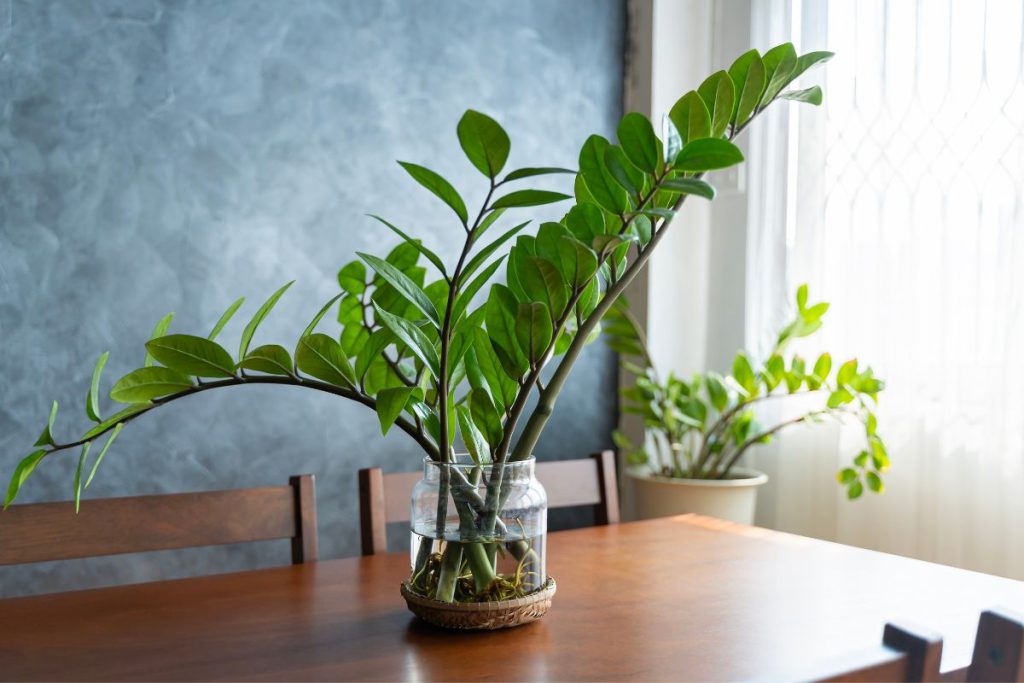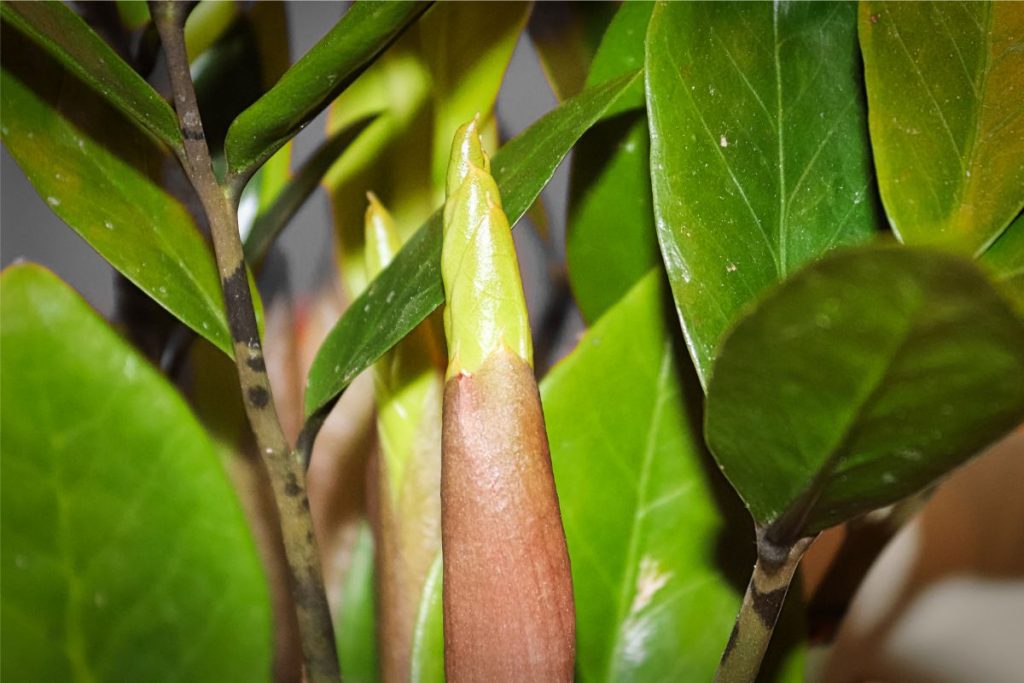“A stitch in time saves nine.” When it comes to pet safety, it’s better to be safe than sorry. ZZ plants are a popular household greenery, but are they safe for your furry friends? In this article, we’ll explore whether ZZ plants can be toxic to dogs and cats, what symptoms of poisoning look like, how to treat and prevent poisoning from occurring, as well as how to care for these plants at home.

Contents
- 1 Are ZZ Plants Toxic To Dogs And Cats?
- 2 Why Are ZZ Plants Toxic?
- 3 Symptoms of ZZ Plant Poisoning in Dogs and Cats
- 4 What Happens If My Pet Touches It?
- 5 What Happens If My Pet Eats It?
- 6 How To Treat ZZ Plant Poisoning In Dogs And Cats
- 7 How To Prevent ZZ Plant Poisoning In Dogs And Cats
- 8 Caring For ZZ Plants At Home
- 9 Conclusion
Are ZZ Plants Toxic To Dogs And Cats?
Yes, ZZ plants are toxic to both dogs and cats. Although not deadly, they can still cause harm if ingested or touched. The sap of a ZZ plant can irritate the skin, leading to rashes and other skin problems. If eaten by pets, it can lead to digestive issues like vomiting and diarrhea. Despite this, you can still keep a ZZ plant in your home as long as you take proper precautions.
Be sure to keep your ZZ plant away from children and pets who might try to nibble on its leaves. Wear gloves when handling the plant so that its sap doesn’t come into contact with your skin. Finally, make sure that you clean up any fallen leaves right away so that your pet won’t be able to ingest them. With these simple steps in mind, you’ll be able to enjoy having a ZZ plant in your home without any worries about safety!
Why Are ZZ Plants Toxic?
You may be surprised to know that this plant’s sap can cause burning sensations when exposed to skin or ingested, due to its calcium oxalate crystals. These tiny, sharp crystals are a defense mechanism for the plant and help regulate calcium in the tissue. Unfortunately, they are hazardous to your pet’s health if they ingest them.
The ZZ plant is toxic to both cats and dogs when eaten. Ingestion of the crystals can lead to irritation of the mouth and throat, as well as inflammation of the gastrointestinal tract. It can also cause vomiting, diarrhea, excessive drooling, difficulty swallowing, and even kidney failure in extreme cases.
It is important to keep your pets away from this type of plant because it poses serious health risks. If you think your pet has come into contact with or eaten parts of a ZZ plant, consult a veterinarian immediately for treatment options.
In addition to keeping plants out of reach from curious animals, it is also wise to use gloves when handling these plants since their sap can irritate unprotected skin upon contact. By taking these precautions you can protect your furry friends from any potential harm caused by toxic ZZ plants!
Symptoms of ZZ Plant Poisoning in Dogs and Cats

Ingestion of the plant’s sap can lead to a variety of symptoms in both cats and dogs, such as irritation of the mouth and throat, vomiting, diarrhea, excessive drooling, difficulty swallowing, and even kidney failure. If your pet has come into contact with a ZZ plant or has ingested any part of it, then it is important to take them to the vet right away.
Symptoms can start showing up soon after contact or ingestion; these include redness around the eyes or mouth, swelling in the neck or face area, drooling more than usual, and abdominal pain. If left untreated, these symptoms could become more serious and even result in death. It is best to be proactive if you think your pet may have come into contact with a ZZ plant. Seek medical attention right away for proper diagnosis and treatment.
What Happens If My Pet Touches It?
If your pet touches the plant’s sap, it may experience temporary irritation and discomfort. If any of their bare skin, mucus membranes, or eyes are exposed to the crystal-containing sap of this plant, they can expect an uncomfortable reaction. Further contact with the sap can lead to more serious symptoms, such as increased itching and redness on the skin. In some cases, pets may suffer from blistering and burning sensations as well.
It is important to keep an eye out for signs that your pet has come into contact with this plant’s sap. These symptoms may include excessive licking or scratching in areas where their skin was exposed to the fluid. You should also watch out for any swelling or redness around a pet’s eyes if they have been touched by the sap from this plant.
If you suspect that your pet has come into contact with ZZ Plant toxin, it is best to seek veterinary advice immediately. They will be able to advise you whether further medical attention is needed or not. To avoid these risks altogether, it is best not to let your pets near the ZZ Plant so that they don’t become exposed in any way.
What Happens If My Pet Eats It?
Consuming this plant can lead to oral pain and other symptoms. If your pet eats a ZZ plant, they may experience decreased appetite, drooling, diarrhea, pawing at their mouth, vomiting, or even very rarely, swelling of the upper airway making it difficult to breathe. Symptoms usually appear within two hours after ingestion and can be resolved in 24 hours.
However, if you suspect that your pet has eaten this plant it is important to seek medical attention right away to ensure the safety of your pet. Your vet will be able to assess the situation and provide an appropriate treatment plan for your pet’s condition. It is also important to monitor your pet over the following days for any further signs of distress or discomfort as well as keeping an eye out for any plants that might be hazardous in the future.
How To Treat ZZ Plant Poisoning In Dogs And Cats
If you notice signs of distress after your pet has been exposed to the ZZ plant, it’s important to act quickly and seek medical advice. Signs that point to poisoning include oral pain, decreased appetite, drooling, diarrhea, pawing at their mouth, and vomiting. In extreme cases, there can be swelling of the upper airway which makes breathing difficult. The onset of these symptoms in pets will appear within two hours of them eating the ZZ plant so it’s important to address any potential poisoning immediately.
The most effective way to treat this type of poisoning is with a veterinarian who may suggest treatments such as activated charcoal or induce vomiting depending on the severity of the situation. If you are unable to get to a vet right away then there are some steps you can take at home including keeping your pet hydrated by offering small amounts of water or broth every few minutes if they are able. Additionally, making sure they have access to fresh air is also crucial for their recovery process.
It is highly recommended that you contact your local veterinarian if you suspect your pet has eaten any part of a ZZ plant as soon as possible in order for them to receive timely treatment and avoid further complications from occurring.
How To Prevent ZZ Plant Poisoning In Dogs And Cats

To prevent pet poisoning, keep your ZZ plant out of reach and away from curious cats and dogs. Placing it on a shelf or table can help, though you may want to hang the plant from the ceiling if you have a particularly tall pet.
You can also use deterrents to discourage pets from getting near the plant such as sprinkling cayenne pepper at the base or leaving citrus rinds around it. Lemon juice can also be misted onto the leaves to make them unappealing. If you have an especially determined pet who is likely to eat plants, however, this may not be the best choice for your home. Keeping ZZ plants out of reach of pets will ensure they remain safe and healthy while enjoying their beauty in your living space.
Caring For ZZ Plants At Home
Caring for a ZZ plant at home is relatively easy and requires only minimal effort. Be sure to use well-draining potting soil and water when the soil is dry. You can also fertilize once a month in summer, but keep it out of direct sunlight. The plant may even surprise you with small flowers during summer or fall, though they are often hidden beneath the leaves.
If you notice yellow leaves falling off, stop watering immediately as this could be due to overwatering. Aphids may also be attracted to the poisonous sap, so inspect your ZZ plant regularly for strange spots on its leaves. When it comes to pruning, just remove any dead leaves; no complicated trimming is required here!
Additionally, dust off the foliage now and then to aid photosynthesis. Repot your ZZ plant every spring if it’s young or if it outgrows its current planter. Finally, propagation is simple – divide rhizomes or take cuttings from mature stems with a couple of leaves and place them in water until roots emerge. With these few steps in mind, caring for your ZZ plant should be easy enough!
Related Post:
Do ZZ Plants Like Humidity?
Do ZZ Plants Like To Be Root Bound?
Conclusion
Your pet’s safety is important, so it’s essential to know whether ZZ plants are toxic or not. Thankfully, these beautiful plants aren’t very poisonous to cats and dogs if touched or eaten. However, you should still take a few precautions to ensure your pet stays safe. Make sure the plant is kept out of reach, dispose of any fallen leaves immediately, and supervise your pet when they’re near it. With the right care and attention, you can keep your four-legged friend away from danger while enjoying the beauty of this unique houseplant!
